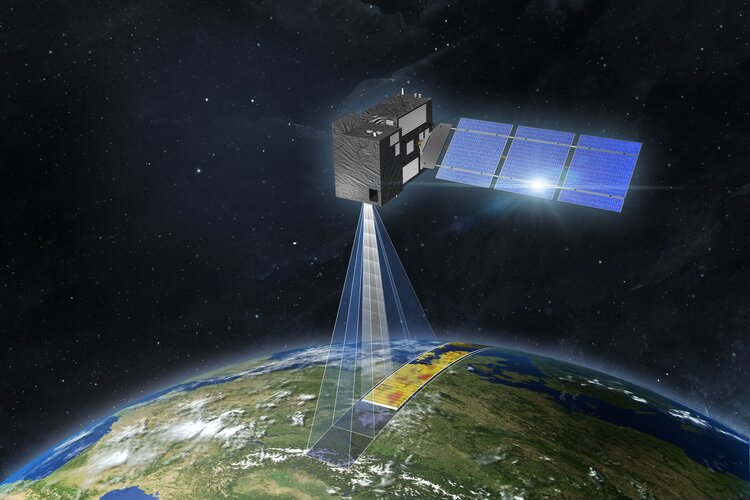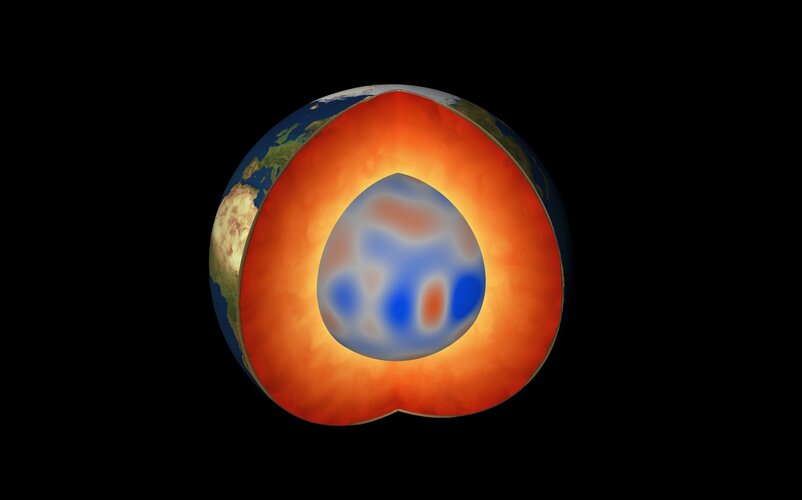
Copernical Team
New spin on galaxy rotation saves controversial gravity theory
 An international group of astronomers, led by a physicist at the University of St Andrews, has revived an alternative gravity theory.
Headed by Dr Indranil Banik of the School of Physics and Astronomy at St Andrews, the study revealed a high predicted rotation speed of gas in a dwarf galaxy consistent with the previously debunked theory known as Milgromian Dynamics (MOND).
An earlier
An international group of astronomers, led by a physicist at the University of St Andrews, has revived an alternative gravity theory.
Headed by Dr Indranil Banik of the School of Physics and Astronomy at St Andrews, the study revealed a high predicted rotation speed of gas in a dwarf galaxy consistent with the previously debunked theory known as Milgromian Dynamics (MOND).
An earlier Navarino teams with OneWeb to extend connectivity to commercial shipping
 OneWeb, the Low Earth Orbit (LEO) satellite communications company, and Navarino, one of the world's leading maritime technology companies, has signed a Memorandum of Understanding (MoU) to become a global Distribution Partner to deliver high speed, low latency connectivity to the global commercial shipping industry.
Combining Navarino's maritime technology solutions with OneWeb's high spe
OneWeb, the Low Earth Orbit (LEO) satellite communications company, and Navarino, one of the world's leading maritime technology companies, has signed a Memorandum of Understanding (MoU) to become a global Distribution Partner to deliver high speed, low latency connectivity to the global commercial shipping industry.
Combining Navarino's maritime technology solutions with OneWeb's high spe Gogo Business Aviation to launch LEO Global Broadband service
 Gogo Business Aviation (NASDAQ: GOGO) has announced it will launch the first global broadband service in business aviation to use an electronically steered antenna (ESA) on a low earth orbit (LEO) satellite network.
Gogo's exclusive antenna assembly, designed in conjunction with Hughes Network Systems, LLC (Hughes), will be small enough for installation on the fuselage of business aircraft
Gogo Business Aviation (NASDAQ: GOGO) has announced it will launch the first global broadband service in business aviation to use an electronically steered antenna (ESA) on a low earth orbit (LEO) satellite network.
Gogo's exclusive antenna assembly, designed in conjunction with Hughes Network Systems, LLC (Hughes), will be small enough for installation on the fuselage of business aircraft Planets of binary stars as possible homes for alien life
 Nearly half of Sun-size stars are binary. According to University of Copenhagen research, planetary systems around binary stars may be very different from those around single stars. This points to new targets in the search for extraterrestrial life forms.
Since the only known planet with life, the Earth, orbits the Sun, planetary systems around stars of similar size are obvious targets for
Nearly half of Sun-size stars are binary. According to University of Copenhagen research, planetary systems around binary stars may be very different from those around single stars. This points to new targets in the search for extraterrestrial life forms.
Since the only known planet with life, the Earth, orbits the Sun, planetary systems around stars of similar size are obvious targets for Mastcam-Ing All the Things: Sols 3480-3482
 Coming into planning on Friday, we were greeted with a beautiful vista, with well preserved layering and amazing outcrops, and a reminder of just how stunning the planet Mars is. Mastcam takes a 360 degree image on a regular basis, and our last one was fairly recently, on sol 3474, but given the stunning views from here, it was suggested that we take another here if we could fit it in.
As
Coming into planning on Friday, we were greeted with a beautiful vista, with well preserved layering and amazing outcrops, and a reminder of just how stunning the planet Mars is. Mastcam takes a 360 degree image on a regular basis, and our last one was fairly recently, on sol 3474, but given the stunning views from here, it was suggested that we take another here if we could fit it in.
As Full steam ahead for carbon dioxide monitoring mission

The Copernicus Anthropogenic Carbon Dioxide Monitoring mission has taken another step forward as ESA authorises the mission’s prime contractor, OHB, to continue the development of the first satellite that will take it to being launch-ready and, in parallel, start production on the mission’s second satellite. Celebrated at ESA’s Living Planet Symposium in Bonn, this contract rider follows an initial contract that was signed in 2020.
Did NASA find a mysterious doorway on Mars? No, but that's no reason to stop looking

For the past 10 years, NASA's Curiosity rover has been trundling around the surface of Mars, taking photos in its quest to understand the history and geology of the red planet and perhaps even find signs of life.
Last week it took a photo which appeared to show a doorway carved into the rock. It's the sort of thing that on Earth might indicate an underground bunker, such as an air-raid shelter.
Seeing is not always believing
At first sight, the picture is totally convincing. At second sight, maybe not. The passage seems to go in only a short way before the steeply descending roof meets the floor.
And then those killjoys at NASA tell us its only about 45 cm high. Still, who said Martians had to be the same height as us? But thengeologists point out several straight-line fractures can be seen in this site, and the "doorway" is where they happen to intersect.
Such a pity. It would have been so exciting if it had been a real doorway.
Swarm unveils magnetic waves deep down

While volcanic eruptions and earthquakes serve as immediate reminders that Earth’s insides are anything but tranquil, there are also other, more elusive, dynamic processes happening deep down below our feet. Using information from ESA’s Swarm satellite mission, scientists have discovered a completely new type of magnetic wave that sweeps across the outermost part of Earth’s outer core every seven years. This fascinating finding, presented today at ESA’s Living Planet Symposium, opens a new window into a world we can never see.
Living Planet Symposium kicks off

ESA’s Living Planet Symposium has opened with a flourish with over 4000 participants including scientists, academics, space industry representatives, institutional stakeholders, data users, students and citizens gathered to discuss the latest findings on our changing planet, as well as advances in satellite technologies, new opportunities in the commercial world, and ESA’s plans for the future.
NASA's ECOSTRESS detects 'heat islands' in extreme Indian heat wave
 A relentless heat wave has blanketed India and Pakistan since mid-March, causing dozens of deaths, fires, increased air pollution, and reduced crop yields. Weather forecasts show no prospect of relief any time soon. NASA's Ecosystem Spaceborne Thermal Radiometer Experiment on Space Station instrument (ECOSTRESS) has been measuring these temperatures from space, at the highest spatial resolution
A relentless heat wave has blanketed India and Pakistan since mid-March, causing dozens of deaths, fires, increased air pollution, and reduced crop yields. Weather forecasts show no prospect of relief any time soon. NASA's Ecosystem Spaceborne Thermal Radiometer Experiment on Space Station instrument (ECOSTRESS) has been measuring these temperatures from space, at the highest spatial resolution 